The paving stones of Haharin street met us when we stepped out the train station:
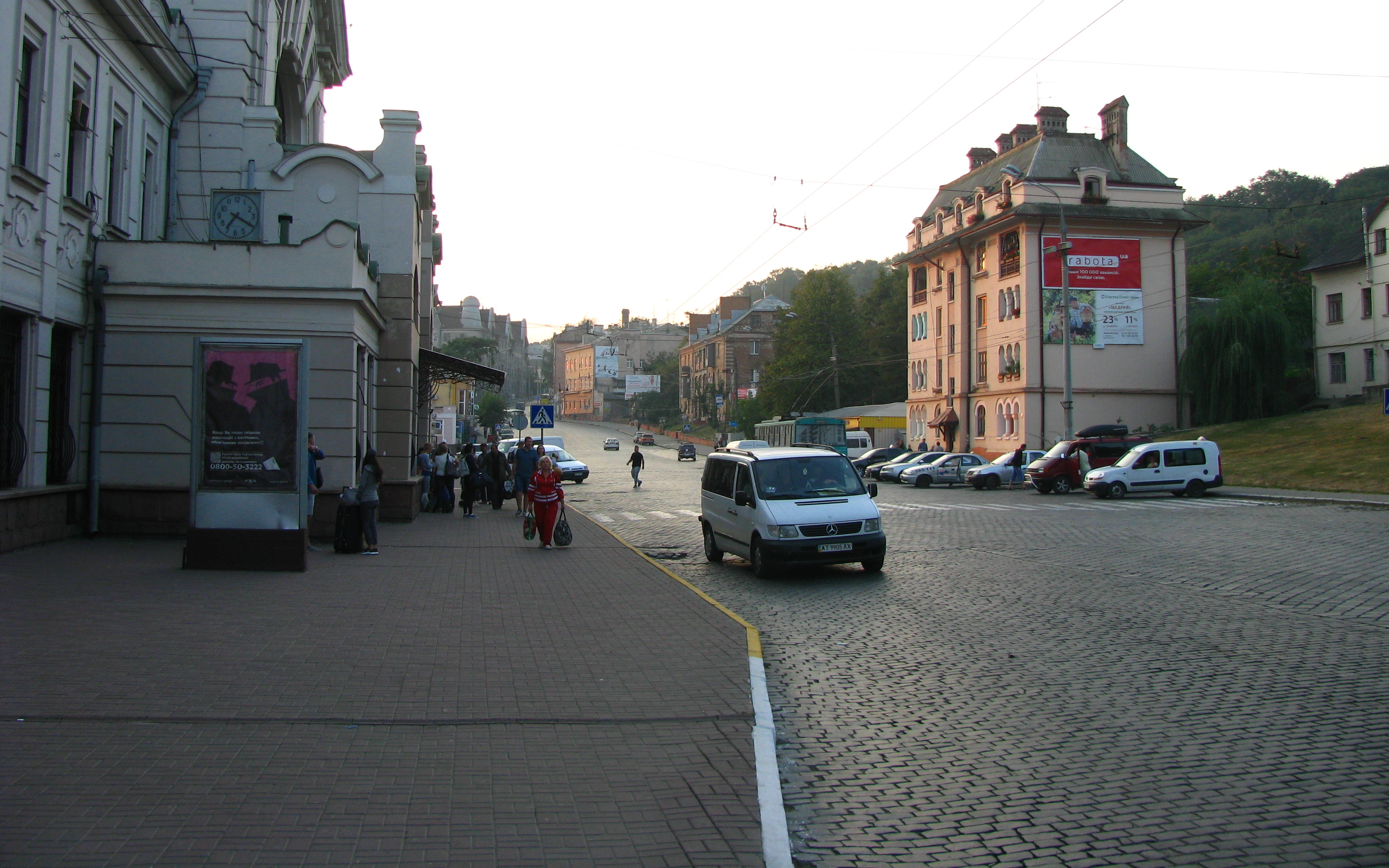
There were no underpasses or overpasses on the train station. If your train arrived to, say, third platform, and the first two were busy, you were left with the choice between waiting, asking the train attendants to let you pass through, or do a detour around these trains. This is a very old-school situation. We had such in my native Melitopol, during the times when many trains passed through.
The paving stones of Haharin street met us when we stepped out the train station:

The ornament of train tracks of the train station, as viewed from a nearby bridge:

Train station as seen through some rusty gates.

There were trolleybuses in Chernivtsi.
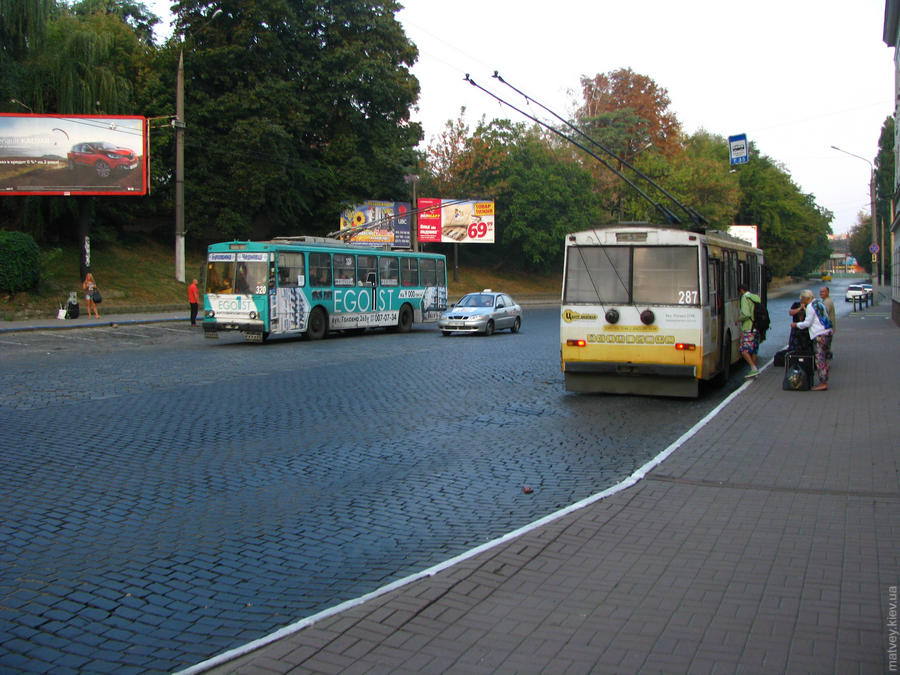
A lot of plants of the Parthenocissus genus was growing on fences and walls. I could not identify the exact species.

An old tram carriage standing not far from the train station, commemorating the first tram of the city.

Lots of dogs — each of them ear-marked — were present in the city, a sharp contrast with Kyiv. Lots of these good boys and girls were improving the scenery with their presence.

Cats were present, too.
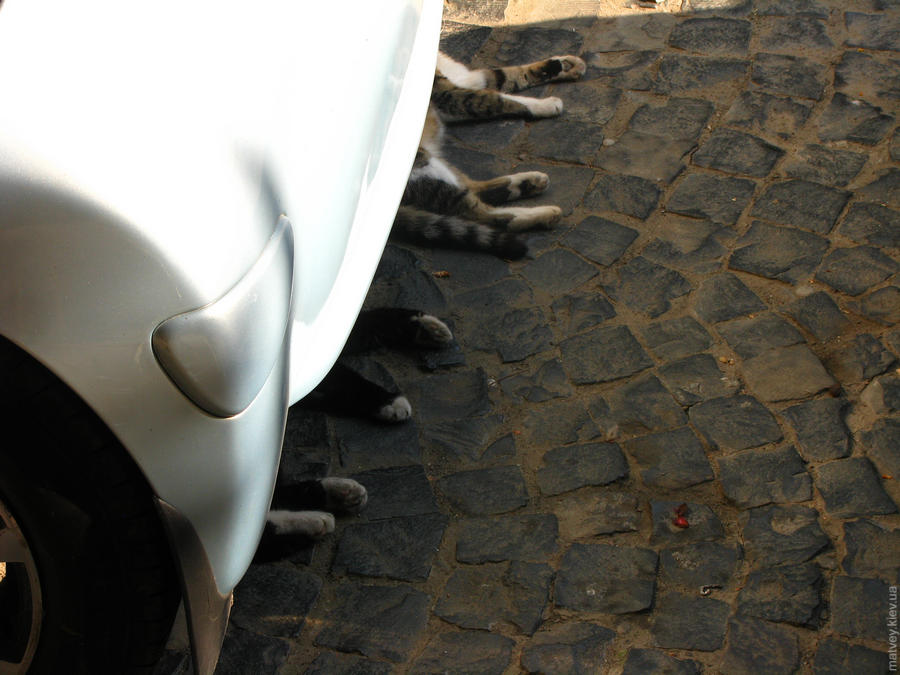
Little street called Nizhynska (dedicated to the town of Nizhyn) climbed up, giving us a hint of the terrain of this city.
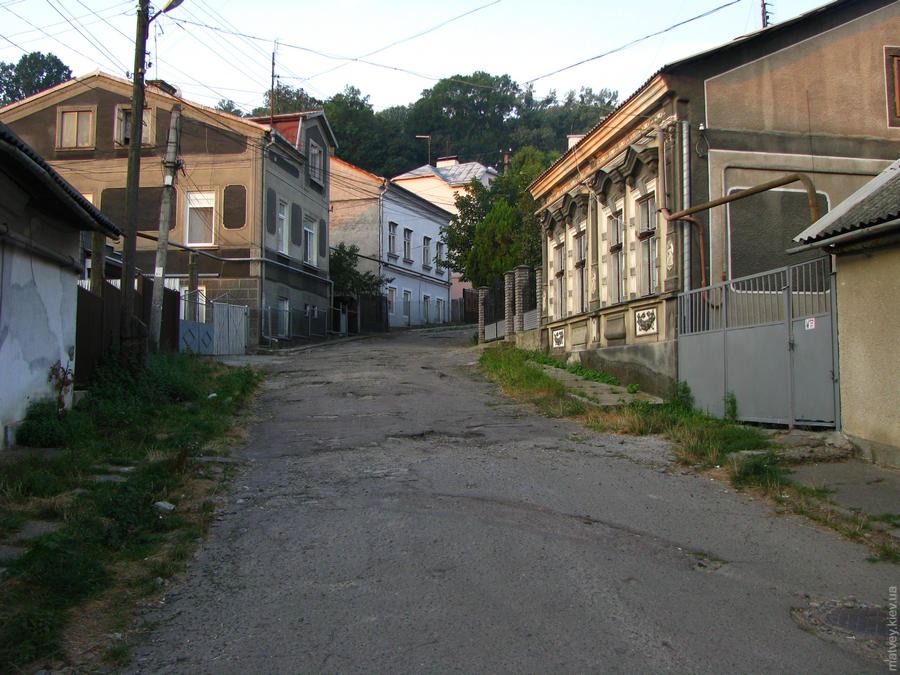
Nizhynska street ended, but the climb didn't! The wider street of June, 28 did not have any flat place in the field of view. I envy the cyclists living here. The district called Sadhora and an industrial area can be seen from this street.
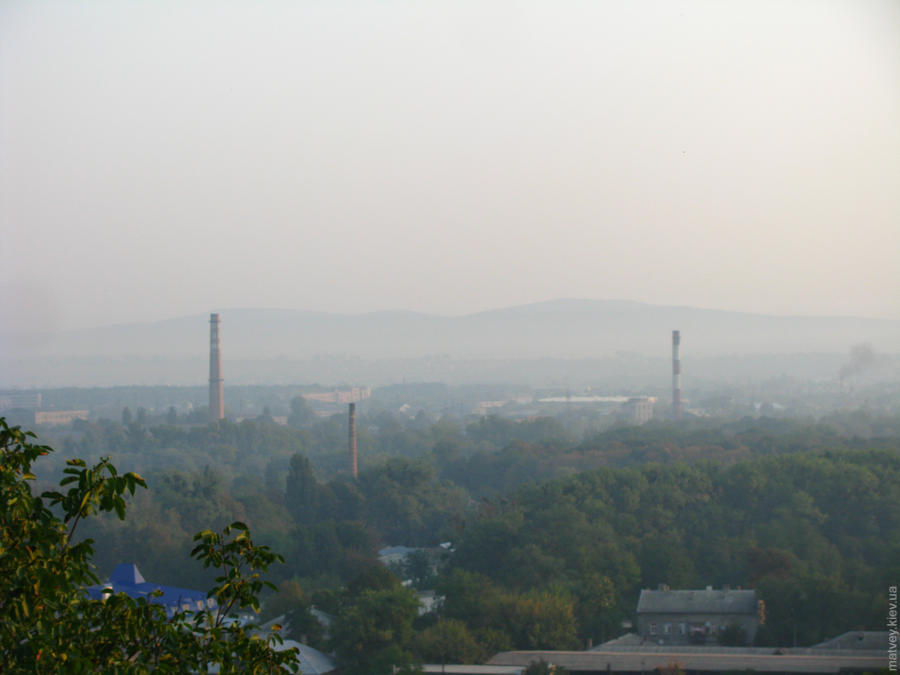

In the end of the climb, there stood the Chernivtsi university. I did not know that it was our destination (didn't care because everything was interesting during the first visit to the city), and was not ready to witness the — hats off — the most beautiful building of Ukraine.
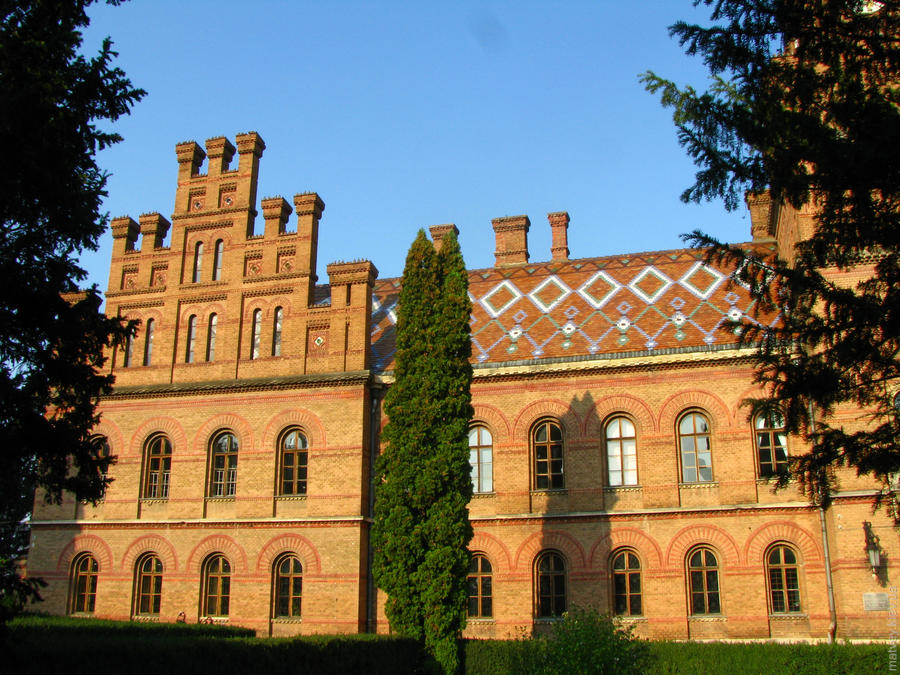
It costed UAH 10 to enter the territory. The visitors were taking photos at an increased rate.
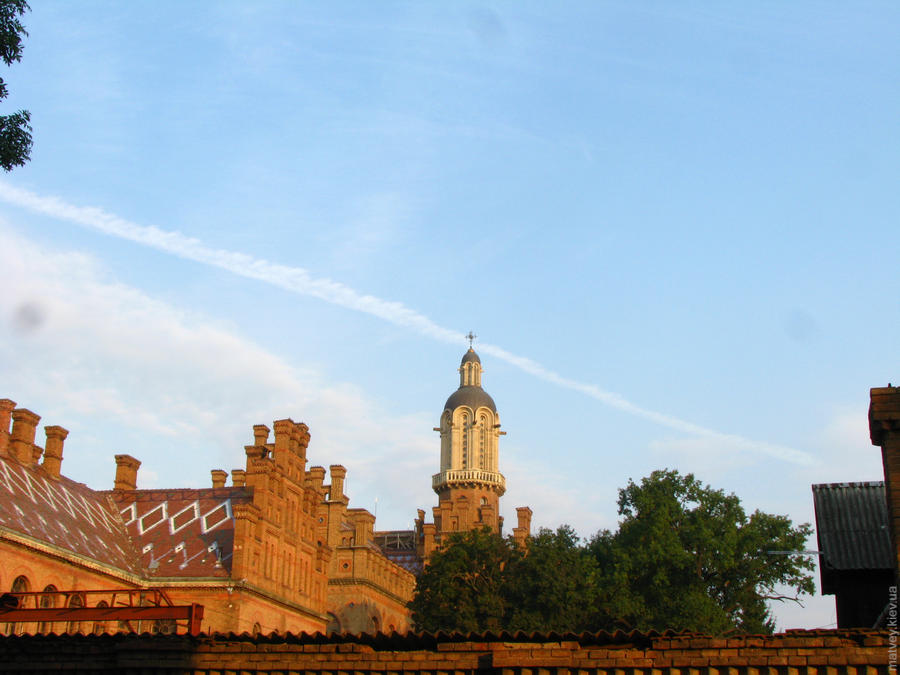
Brown bricks. Ornaments on the roof.
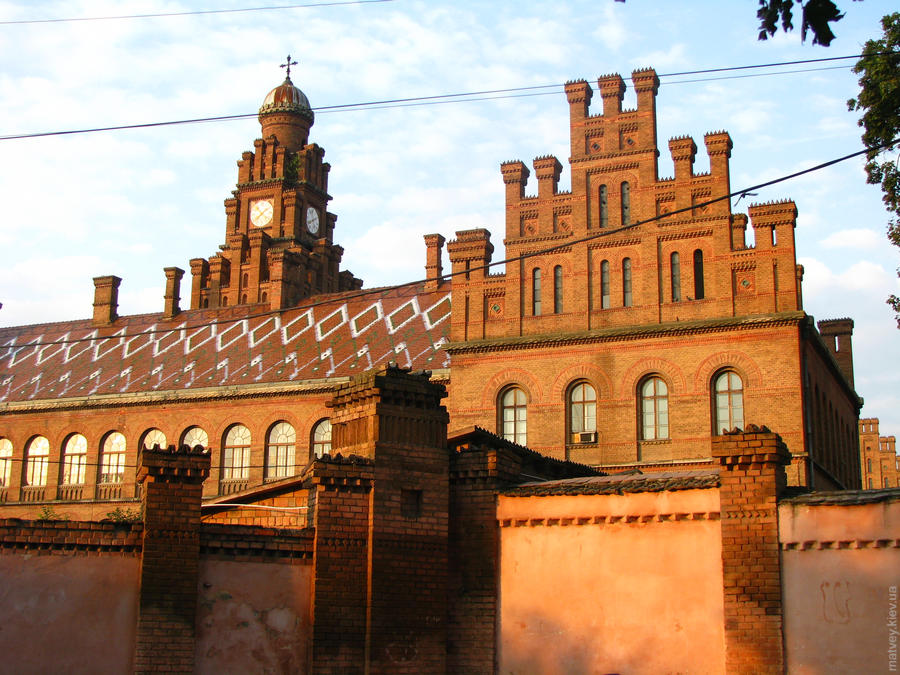
A passage with pillars.
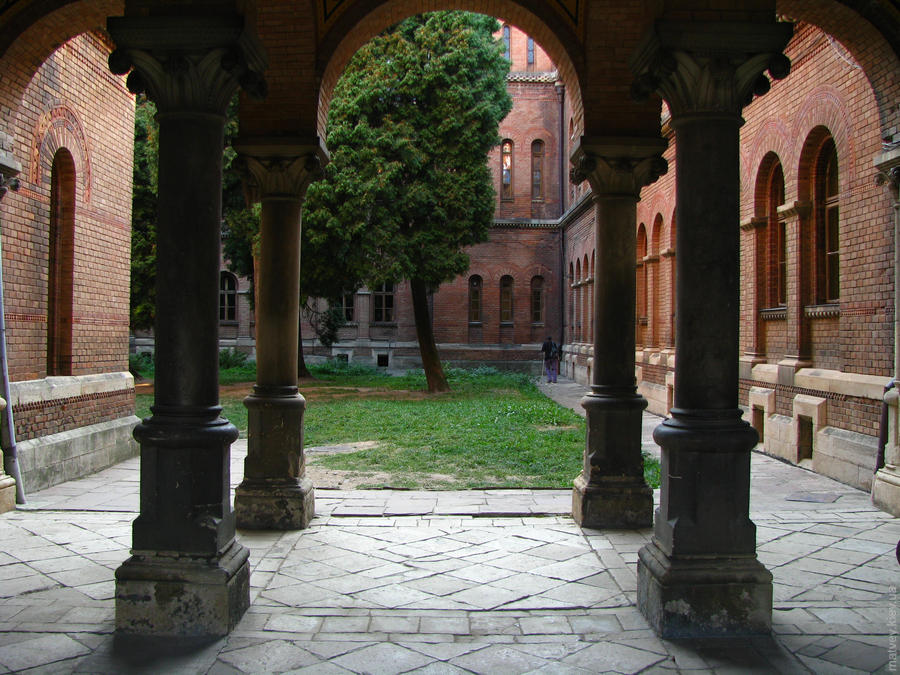
One of the corridors of the university.

Fine, we left to see the rest of the city.
A building near the university.
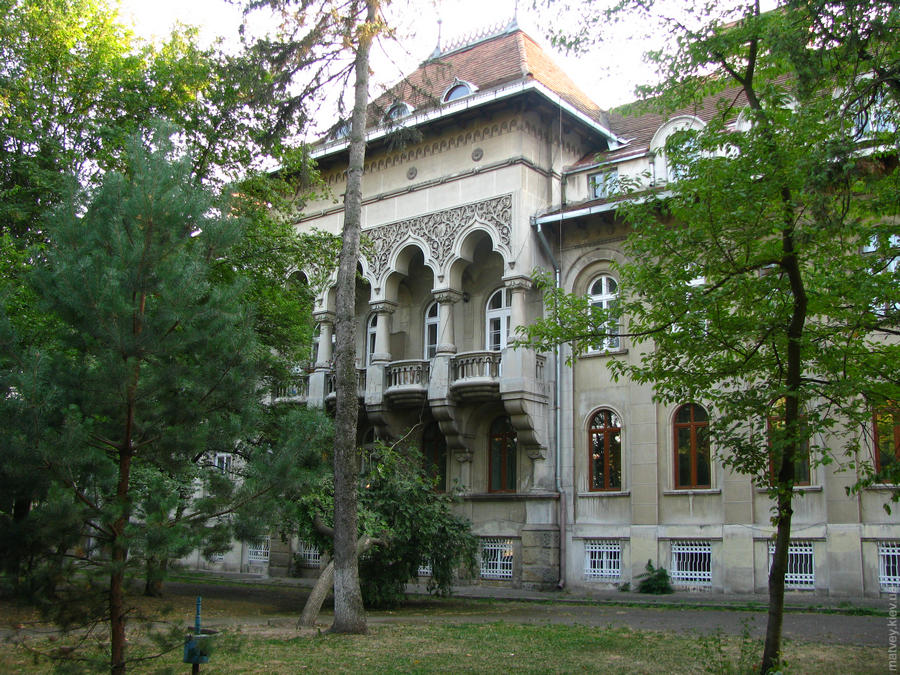
This angry dog on the porch did not trust us at all, making growls full of hate towards us.
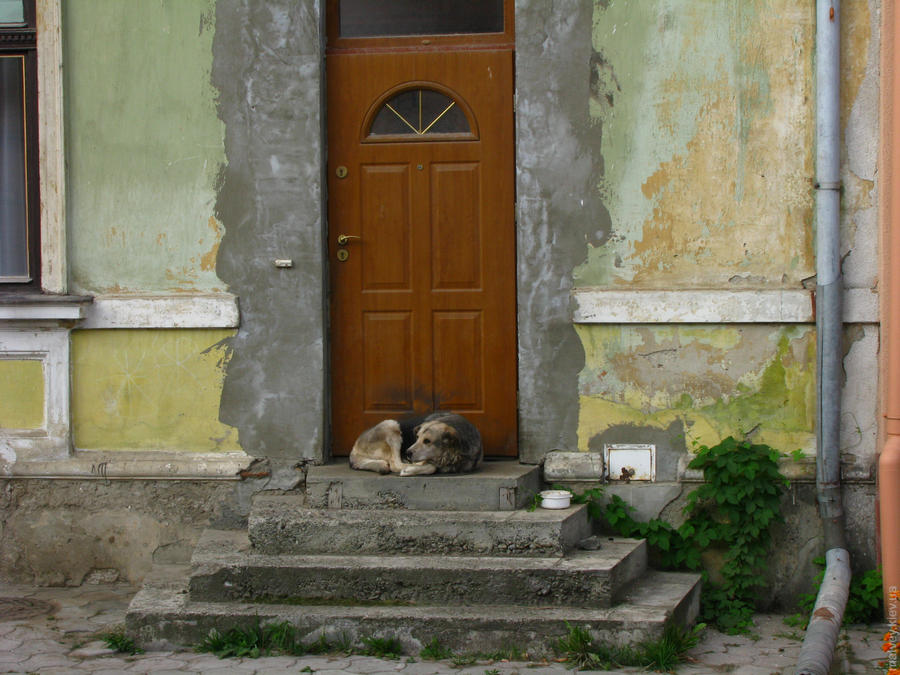
The paving stones were practically everywhere in the historical center. Not an ideal situation for the road bicycles. Some road bikers love to suffer on cobbles, however.
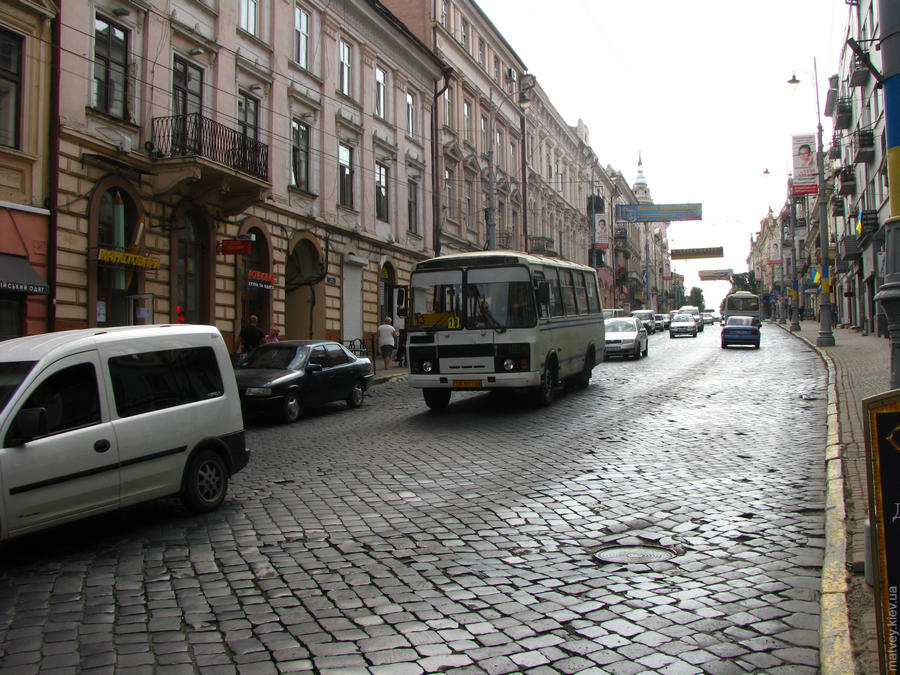
My friend said that this architectural style is called «modern». I did not know this myself.

It was way too many nice buildings. I got fed up at some moment, and stopped clicking my point-and-shoot.
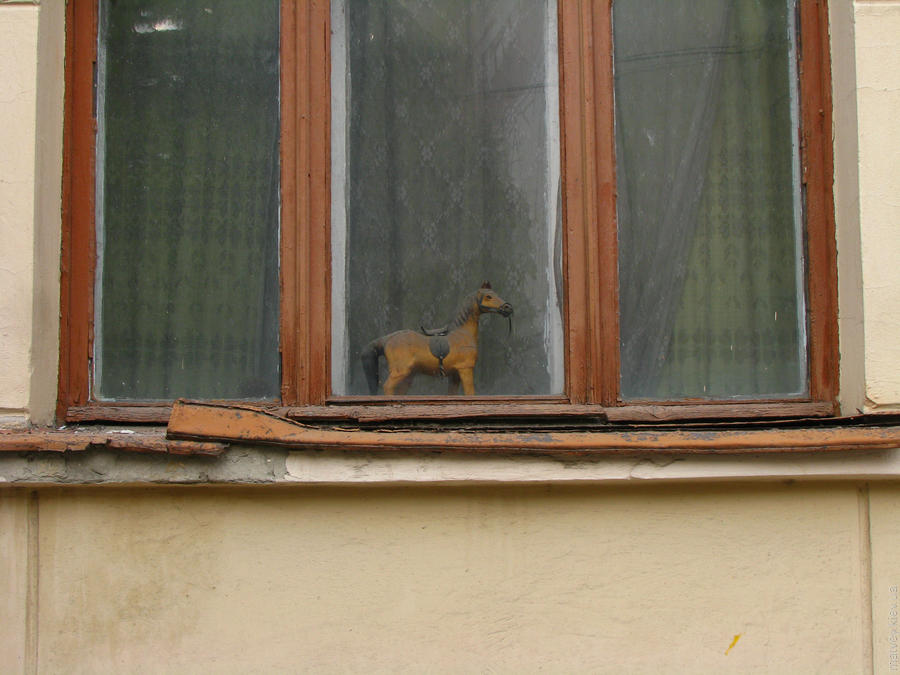
Having his reasons unknown to me, a guard of the closed philharmonic invited us two inside and shown us the stage and some corridors. I did not take photos inside.
The historic center had lots of trash shops. Weakly lit tight rooms with no traces of owners' attempts to show respect to visitors were selling the worst food of this planet, on or beyond the edge of best before dates.
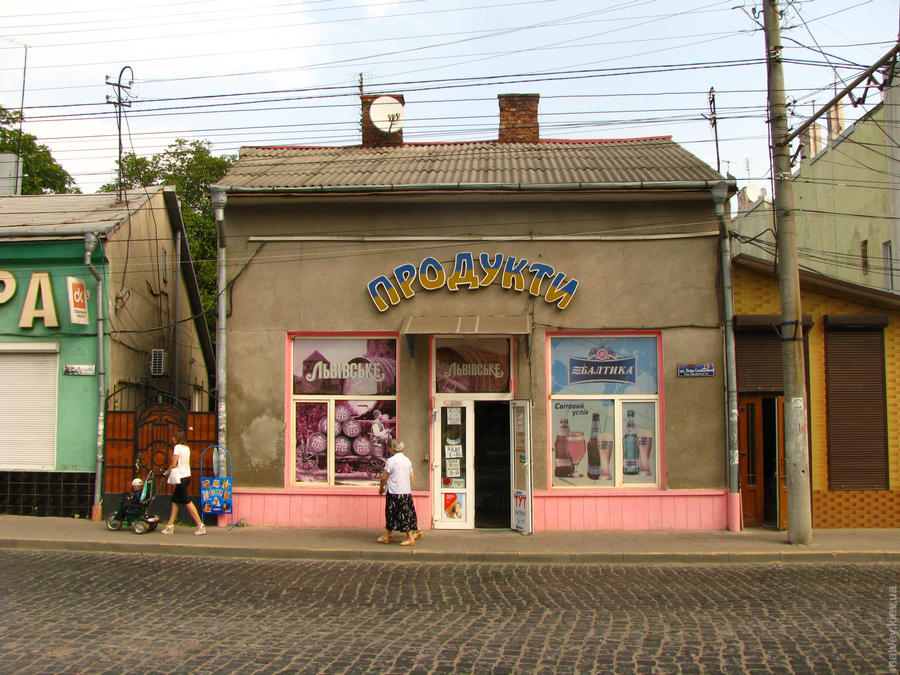
We visited the museum of Olha Kobylianska, with this strange photo being the one I chose to show here. These stairs led to a microscopic garden.
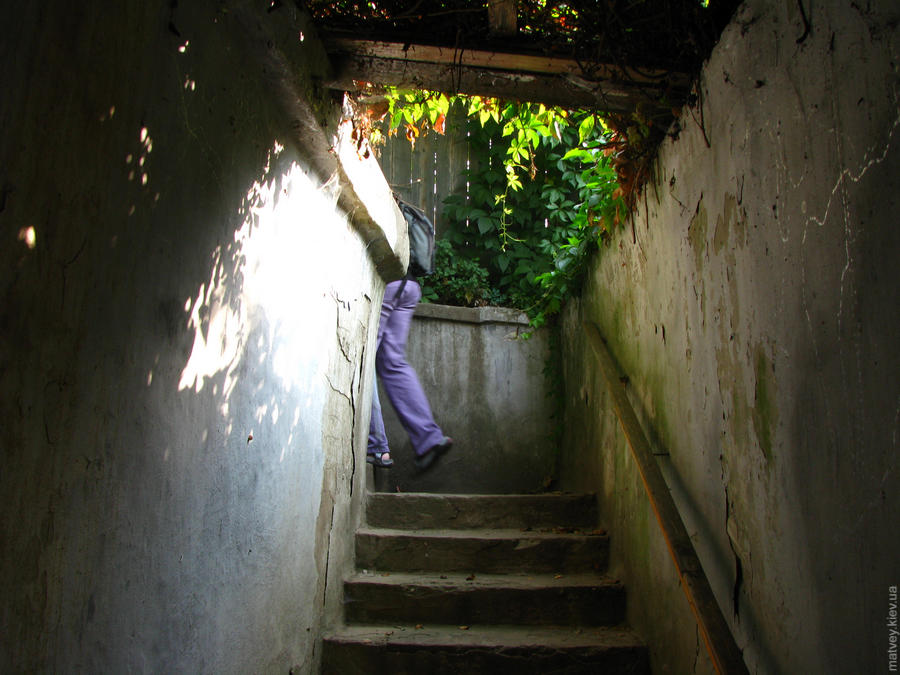
Creativity of the locals: remove one letter on a sign to make an obscene word. The original was «бляхарня», meaning «tinsmith».
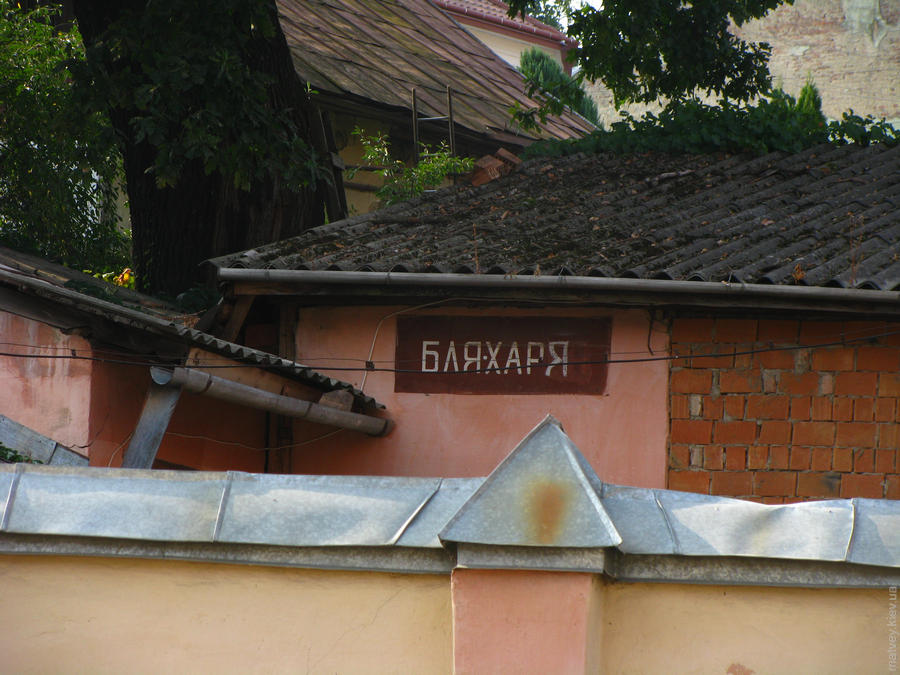
A lovely disused catholic temple, or «kostyol».
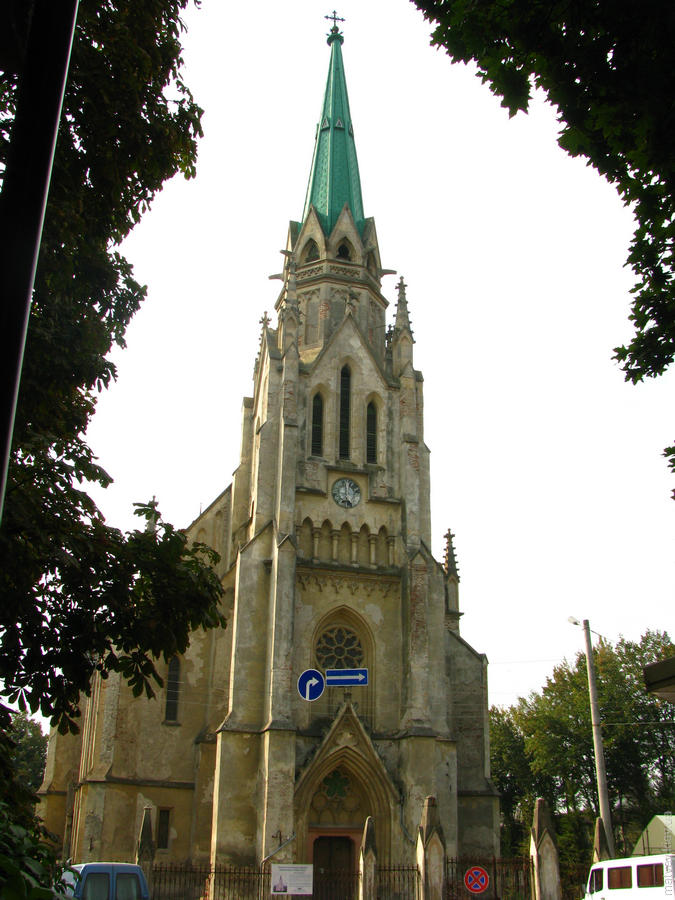
Okay, I was done with the tourist center. It was time to point my feet elsewhere: to the city's river through an industrial area.
Religion (christianity, in this case) was conquering people's brains. A simple number plate of a house stated who's the lord here.

There was a dam along the river, protecting the city from floods.

The river here is called Prut (pronounced «Proot»), and it flows from near the highest mountain of Ukraine. It seemed to me that it was similar to Bystrytsia-Solotvynska in Ivano-Frankivsk, but a little more littered.
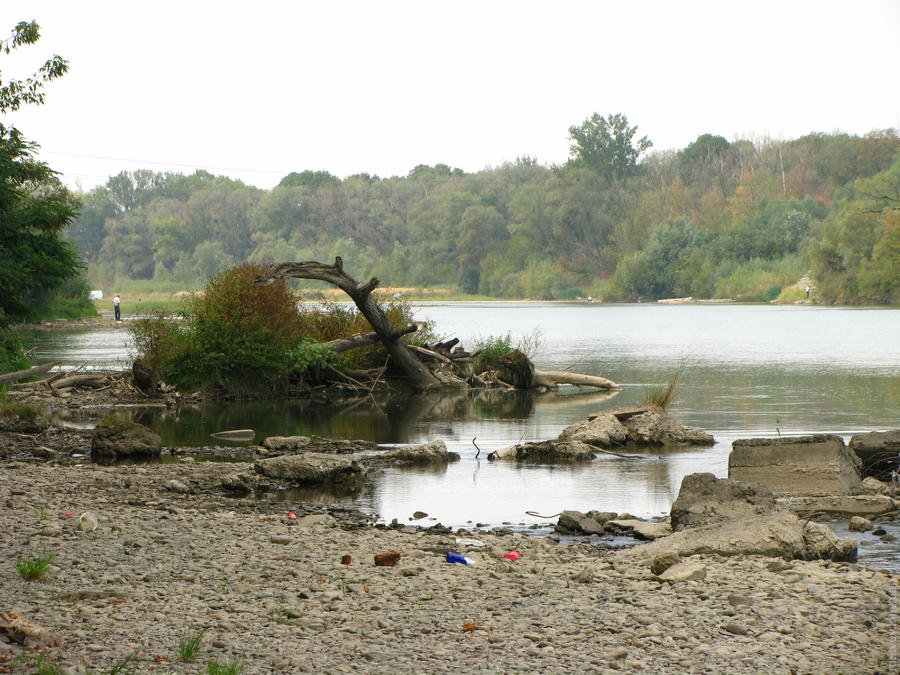
A small river Klokuchka flows into the Prut through the protective dam, and falls as a small man-made waterfall.
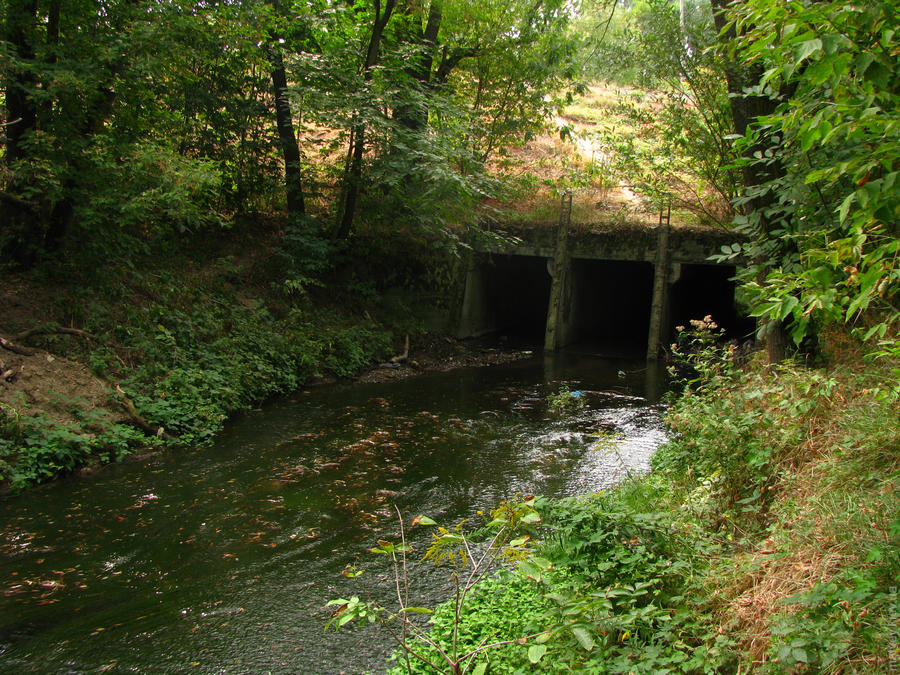
Klokuchka river served as a natural border to the industrial area. There was an unpaved track road on the other side among the freely roaming vegetation (mostly trees).
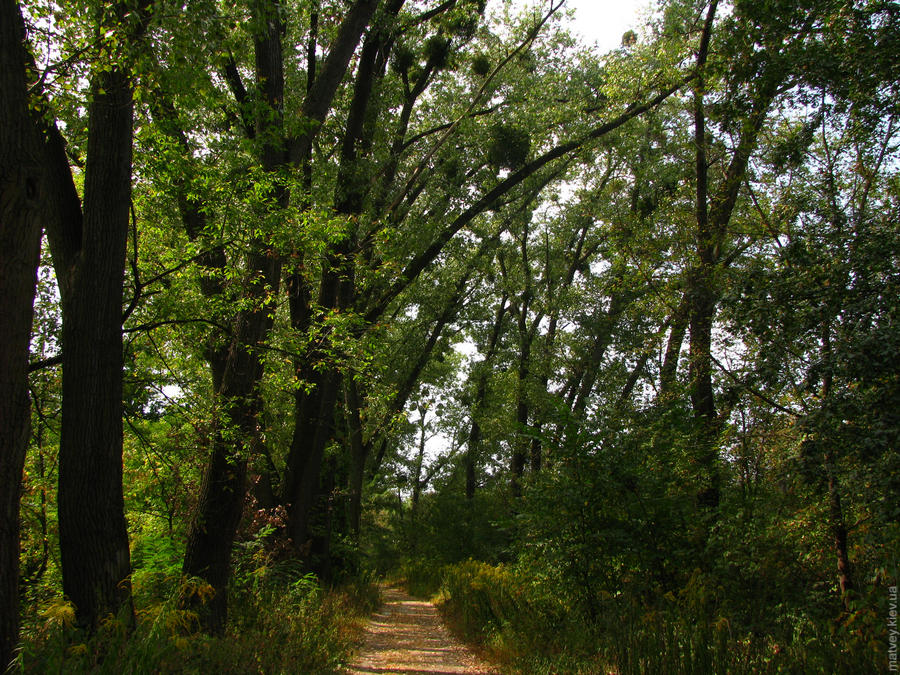
There was nobody else on that road except me. Had some rest from humans.
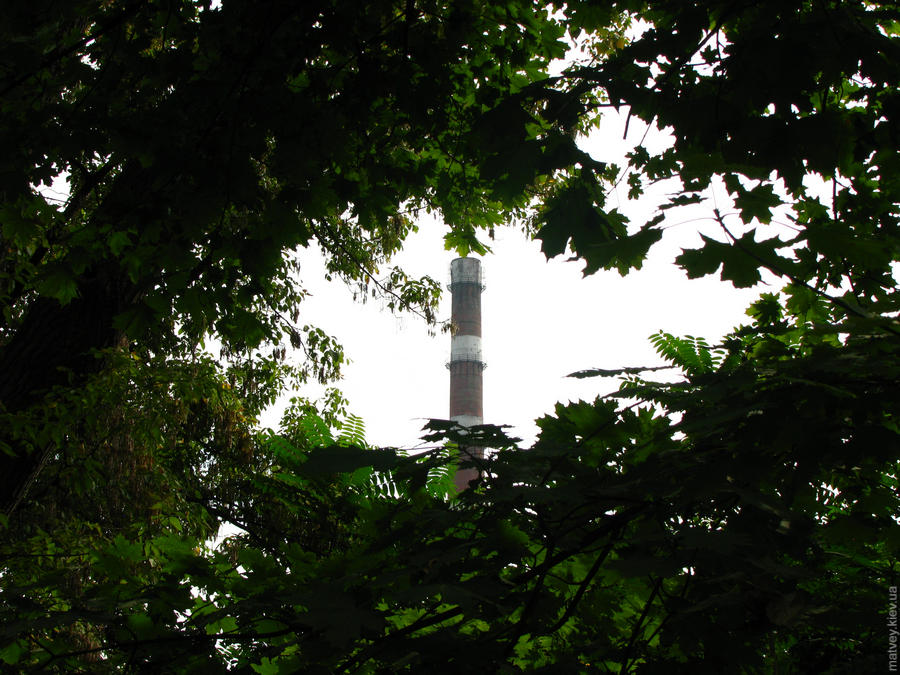
An obscene word written on the sign directing to the beach, implying there is no beach. I've been told later that the beach exists indeed. I didn't check myself.
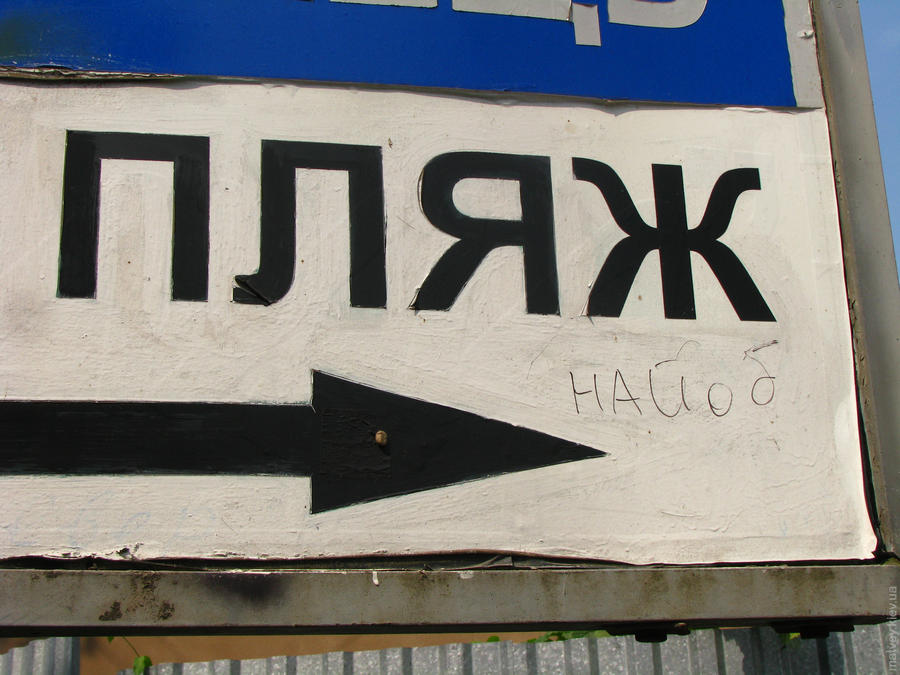
This was my first time in Chernivtsi. I loved the city and will be back, provided I'm alive.
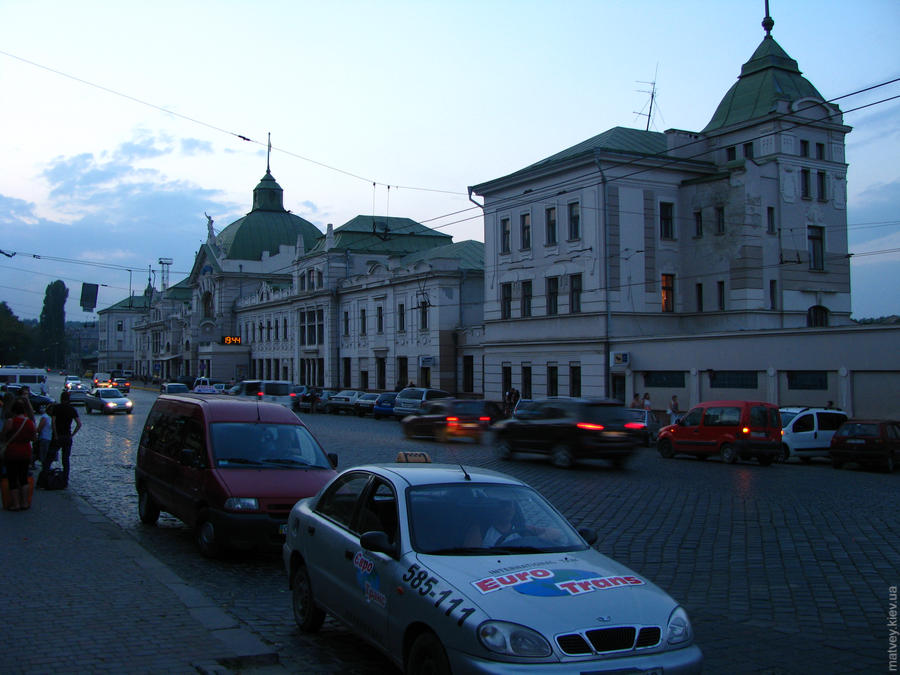
P.S. I did come back, still want to visit again.
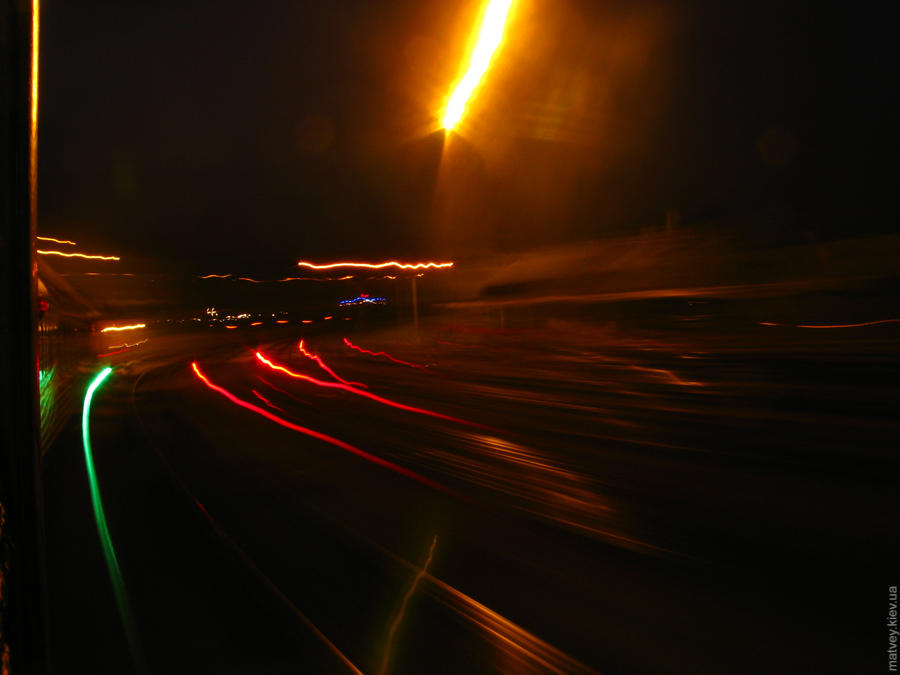
Provided I'm alive.